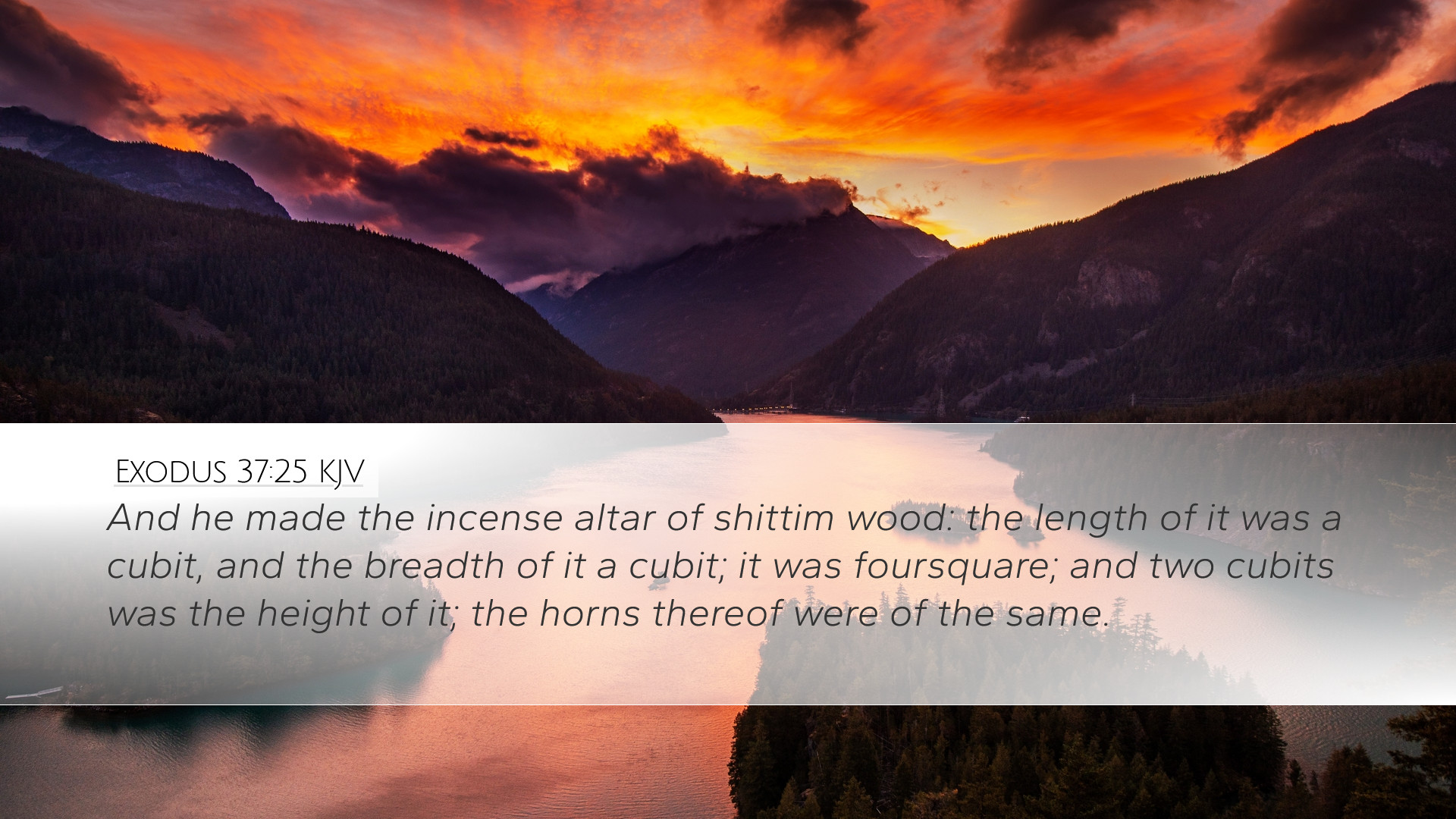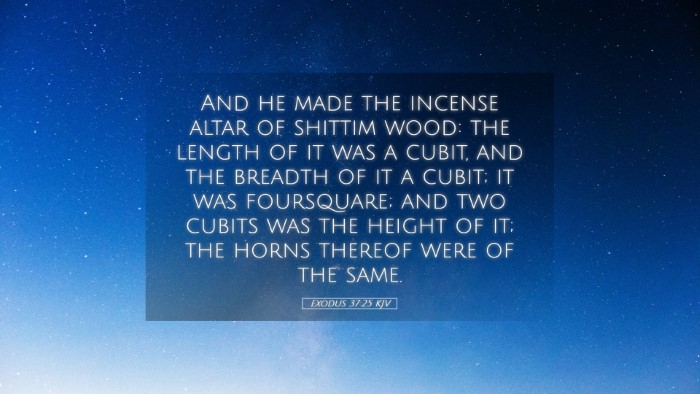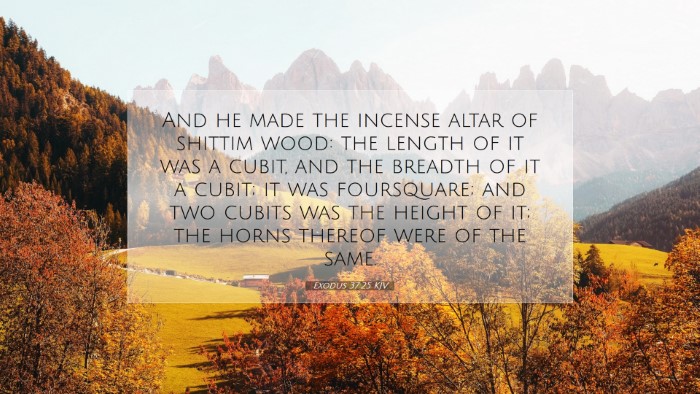Commentary on Exodus 37:25
Verse: "And he made the incense altar of shittim wood: the length of it was a cubit, and the breadth of it a cubit; it was square; and two cubits was the height of it: the horns thereof were of the same." (Exodus 37:25)
Introduction
This verse is part of the descriptions detailing the construction of the Tabernacle and its furnishings. Each item holds significant spiritual and theological implications, revealing deeper truths about the nature of worship, sacrifice, and communion with God.
Construction Material
Shittim Wood: The use of shittim wood (acacia) is noteworthy as it signifies strength and durability. Commentators like Matthew Henry emphasize that God often chooses materials that symbolize His purpose. The choice of wood represents not just physical resilience but also serves as a reminder of the lasting covenant God makes with His people.
Dimensions of the Altar
The altar measures one cubit in length and breadth and two cubits in height, making it a cubical structure. As Albert Barnes points out, this symmetry symbolizes completeness and perfection. The altar's cubic shape, being square, provides theological meaning that reflects the holiness of the items associated with God’s presence, representing stability and balance.
The Height of the Altar
The altar's height of two cubits suggests an elevated position in worship, indicating that one must approach God with reverence. Adam Clarke explains that the raised nature of the altar reinforces the idea of elevating our prayers and sacrifices to God, signifying reliance on divine intervention in our lives.
The Horns of the Altar
The horns of the altar, made of the same material, have significant symbolism. They represent strength and a place of refuge. Matthew Henry notes that the horns symbolize power, and those who clung to them demonstrated an appeal for mercy and protection. This illustrates how worship and sacrifice provide refuge in the presence of God.
Symbolism of the Incense Altar
The incense altar serves as an essential element of worship, with incense representing the prayers of the people being lifted to God. Albert Barnes points out that the fragrant offering is not just a ritual but a representation of the devotion and spiritual purity that ought to be present in the hearts of worshippers.
Application in Worship
Understanding the importance of the altar encourages pastors and theologians to evaluate the aim and attitude of worship within their ministries. Adam Clarke suggests that modern worship should aim for both genuineness and reverence, paralleling the physical representation of worship found in the Tabernacle. To bring incense before God is to present ourselves as living sacrifices, dedicated and holy (Romans 12:1).
Theological Implications
The construction specifics outlined in Exodus 37:25 reflect God’s meticulous nature in establishing a relationship with humanity. Matthew Henry highlights that every component of the altar is significant, urging believers to recognize God’s presence in the minutiae of life and worship. This builds a theology that sees God involved in every aspect of life, shaping how one conducts both personal and corporate worship.
Conclusion
Exodus 37:25 encapsulates rich theological insights about the nature of worship, the attributes of God, and the character of our approach towards Him. By examining the details of the altar of incense, believers can derive both practical and profound lessons on how to engage with God. As we study this account, may we be encouraged to foster a heart of reverence and dedication in our communion with the Almighty.


